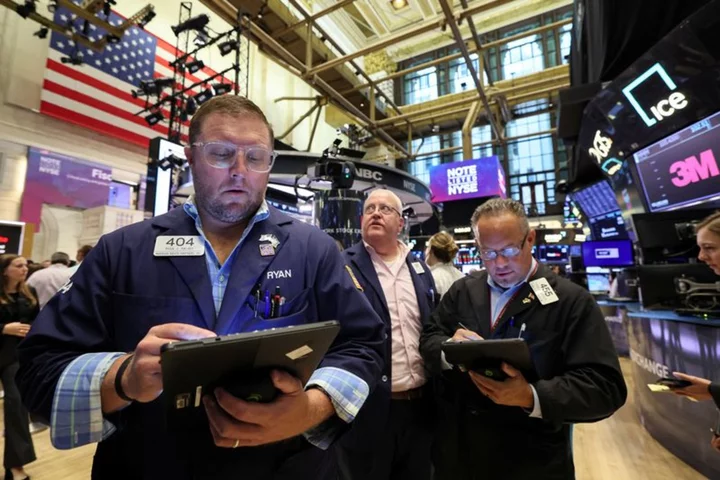By David Randall
NEW YORK The latest U.S. inflation data is unlikely to ease worries over persistently high Treasury yields that have gnawed on stocks over the last few weeks, investors said, although many believe the longer-term trend of cooling consumer prices remains intact.
U.S. consumer prices climbed by 0.6% in August, broadly in-line with economists expectations. In the 12-months through August, the CPI jumped 3.7%, though year-on-year consumer prices have come down from a peak of 9.1% in June 2022.
While that data does not necessarily argue for more rate increases, it did little to dispel expectations that the Federal Reserve will leave interest rates at current levels for longer than previously expected, a view that has boosted Treasury yields while dulling the allure of stocks since the equity market peaked in July.
With the S&P 500 already up over 16% year-to-date and stocks richly valued by some metrics, some investors believe equities from will struggle to make headway for the rest of 2023.
"As long as inflation continues to be sticky we believe that the market will face more volatility and trade sideways," said Alex McGrath, chief investment officer for NorthEnd Private Wealth, adding that falling valuations for risk assets may be "the next shoe to drop" for the U.S. stock market.
Futures tied to the Fed's funds rate now show a 45% chance of at least one rate hike by December, up from a roughly 31% chance seen a month ago. Markets now anticipate that the Fed will cut rates for the first time in July 2024, compared with expectations a month ago that rates would begin falling by March.
The central bank concludes its monetary policy meeting on Sept. 20 and is expected to leave rates unchanged, though some investors believe it may deliver one more increase later this year.
Rising Treasury yields, which move in the opposite direction to bond prices, can be a stumbling block for stocks as they offer investors returns on an asset that is seen as basically risk-free because it backed by the U.S. government. The benchmark 10-year Treasury yield was up 2 basis points on Wednesday to 4.284%, putting it about 6 basis points below its highest level since 2007.
The S&P 500 is down 3% from its July highs.
"For the bond market the move higher over the past couple of months has been in anticipation that the Fed will be in a higher for longer position, and that is putting a downward pressure on stock multiples" and increasing the risk of volatility, said Kevin Gordon, senior investment strategist at the Schwab Center for Financial Research
JPMorgan has been one of the banks sounding the alarm on stock valuations, with strategists warning in a note on Tuesday that a metric based on real interest rates, which strip out inflation, shows the S&P 500 is over-valued by 14%. Overall, the firm estimates that the current real rate implies a forward price-to-earnings (P/E) ratio of around 15 times to 16 times versus its current ratio of about 20 times.
"Equities are up 16% YTD mostly on multiple expansion while real rates and cost of capital are moving deeper into restrictive territory," the firm's equity strategists said in a note. "History suggests this relationship is becoming increasingly unsustainable."
At the same time, not everyone believes high yields are currently the market’s biggest risk. Charlie McElligott, managing director and cross-asset macro strategist at Nomura, said the market was vulnerable to an “earnings shock” to one of the handful of megacap stocks that have led markets higher this year, such as Nvidia. Companies will begin reporting third-quarter earnings next month.
"If [the AI] story starts to lose air it doesn’t matter what the interest rates do because there is so much earnings growth built into their share prices,” he said. “Earnings are what matter from here, particularly with an AI sector that needs to justify expectations."
(Reporting by David Randall; Editing by Ira Iosebashvili and Sharon Singleton)









